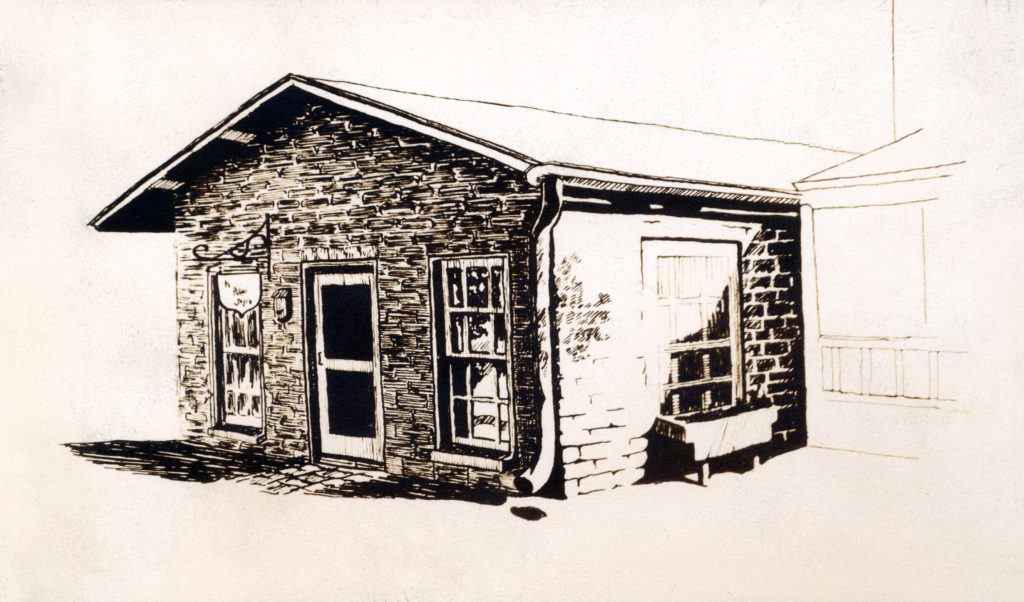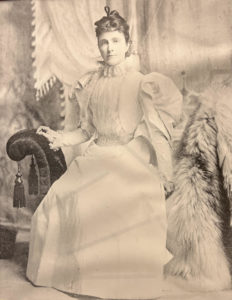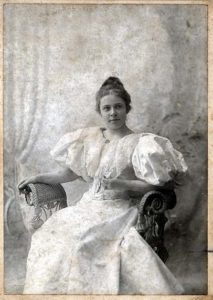
BY SHELLIE TAYLOR


This year, the Statesville library will celebrate its 100th anniversary. To wrap up Women’s History Month and celebrate National Library Week in April, I’d like to highlight to two very important ladies — Mary Alice Robbins Long and Edith Ausley — to whom we can send all of our gratitude for the existence of the Statesville Library. Although we mark our beginnings in 1922 with the latter of the two ladies, the library’s history goes even further back. In can perhaps be said that no one fought harder than Edith Ausley to ensure the creation of a library in Statesville.
At the turn of the 20th century, Scottish-American steel tycoon and philanthropist Andrew Carnegie was erecting free public libraries across the United States, many of which still stand today. He would give $5,000 to 10,000 for the building as long as the city or town could supply the land and would commit to $500 per year in support of the library staff and building maintenance. Communities around the country were lining up for this amazing deal, and who could blame them?
Edith Ausley brought Carnegie’s attention to Statesville, and in 1903 he was seriously considering it. At that time, Statesville was — and maybe would have been — the smallest town under consideration of Carnegie’s donation. In 1905, Carnegie agreed to fund a library in Statesville. It just needed local approval.
By 1913, a decision still hadn’t been made regarding the Carnegie library at the local level, but Edith Ausley had collected over 1,750 volumes of books for the forthcoming library. They were housed at the location on Mulberry Street where she managed and catalogued the collection. A generous land donation had come from Mrs. S.A. Sharpe, who gave land on the corner of Mulberry and Sharpe Streets, only blocks from the main school in the city which would have provided students with easy access to the public library. According to an article in the “Statesville Sentinel,” Sharpe provided the land with absolutely “no strings attached.” She was literally giving a free gift to the City of Statesville in order to build a beautiful Carnegie library. By this time, Ausley and other Statesville women had raised $142.97 to go toward new library equipment in the new facility. The great Carnegie library of Statesville was in the bag; all that needed to happen was for the Statesville citizens to vote “yes” in the upcoming election to an additional tax that would fund the $500 per year requirement.
For those familiar with the layout of Statesville, you know that there is no such beautiful building in this town. The vote was turned down. That’s right. Statesville residents turned down a remarkable and mostly free gift from one of the most generous philanthropists in the country. All of Ausley’s hard work was lost. The library remained in the Mulberry building until another Statesville woman stepped up to give the town what it definitely needed.
Mary Alice Robbins Long was the daughter of the U.S. Congressman William McKendree Robbins, and she married Judge Benjamin Franklin Long. To say that she was a prominent lady in the affluent, elite social circles of Statesville would have been an understatement. But for all her name and pedigree, Mary Long was never afraid to get involved and do what needed to be done for the City of Statesville. She served as head of the Women’s Missionary Society in 1889, organized the first local chapter of the United Daughters of Confederacy in 1894, and she launched the first Women’s Club in Statesville in 1920. The club’s first task was to realize Mary’s dream of a public library in 1922 when the club moved the Statesville Library into a small building on East Broad Street.
In the 1930s, the library partnered with the Garden Club of Statesville, which was led by Grace Anderson. This collaboration resulted in the beautification of the library building on the outside to create curb appeal. The club continued to operate the library until 1939 when the library was given to the City of Statesville if they provided a new building. The new library was moved up Broad Street and would serve as home to the city library until it merged with the county library in 1968.
In addition to her role at the Women’s Club and Daughters of the Confederacy, Mary Long would go on to be president of several organizations, including the Women’s Auxiliary of the First Presbyterian Church and the Alumni Association of Mitchell College.
Mary died in 1947 at the age of 89. She would have known a lot about so many people and events in this town. She probably knew all the juicy gossip too. Her obituary called her a “born leader,” a trait which she passed to her daughter, Marie Long Land, who succeeded her as president of the Women’s Club and who would go on to sit on boards at the state federation level. Mary Long had high hopes for what a library would look like in Statesville. Although we can all agree that the 1917 vote was a huge loss for the community, Long rallied women once again and planted the seed for what is now the Iredell County Public Library. She began our history 100 years ago and we look forward to another 100 years and beyond of serving this great town.
Shellie Taylor is a Local History Program Specialist at the Iredell County Public Library.




When you say that the “citizens” of Statesville turned down the offer by voting no, you really mean the men. Women couldn’t vote until after 1919. Even the women who worked so hard for our library, couldn’t vote for it. I’m just saying….